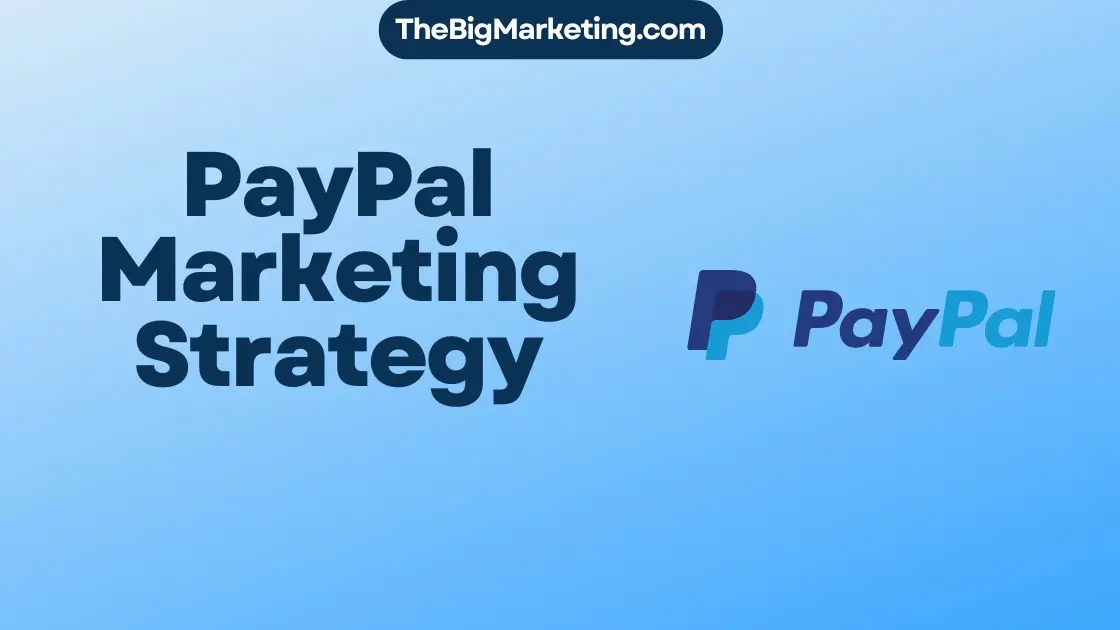Netflix, the global leader in the streaming market, has continuously evolved its branding strategy to maintain its dominance and effectively connect with its target audience. With over 247 million subscribers worldwide, Netflix’s extensive international presence and strategic initiatives have propelled its success.
Key Takeaways:
- Netflix’s shift from DVDs to streaming revolutionized the industry, surpassing traditional video rental companies like Blockbuster.
- The successful release of “Squid Game” garnered over 111 million views in its first month, solidifying Netflix’s position as the go-to platform for captivating content.
- Netflix’s licensing deal with WWE for one of its weekly professional wrestling broadcasts signifies its commitment to diversifying its content offerings and attracting new subscribers.
- Despite increased streaming competition, Netflix’s churn rate has not been significantly impacted, highlighting the loyalty of its existing customer base.
- An ongoing analysis of Netflix’s performance will continue to assess factors influencing the streaming landscape, content strategy, and market competitiveness.
Stay tuned for our comprehensive examination of Netflix’s branding strategy, as we delve into their brand positioning, digital marketing efforts, target audience, content creation, and more. Explore the key principles behind their success and discover how Netflix continues to thrive in the fiercely competitive streaming industry.
The Evolution of Netflix
Since its founding in 1997 by Marc Randolph and Reed Hastings, Netflix has undergone a remarkable evolution, transforming from an online DVD rental service to the world’s leading on-demand video streaming platform. This transformation is a testament to the company’s ability to adapt to changing market demands and consumer behavior.
Netflix initially started in 1998, offering customers the convenience of renting DVDs by mail. With an affordable price of $4 per DVD, customers could expect their selected movies to arrive within eight days. This DVD rental model allowed Netflix to quickly gain traction, reaching 800,000 subscribers by the end of 2002.
The turning point came in 2007 when Netflix introduced its streaming service. Although the initial offering was limited to only 300 movies, it marked the beginning of a new era for the company. As technology advanced and internet speeds improved, streaming became the preferred method of content consumption.
By 2010, Netflix had recognized the growing demand for streaming and made a strategic shift in its brand positioning, prioritizing its streaming service over DVD delivery. The company’s streaming service had grown exponentially, surpassing 20 million subscribers by that year.
In 2011, Netflix introduced a new monthly streaming plan priced at $7.99, while keeping the price of DVD rentals at the same level. This move showcased Netflix’s commitment to the subscriber-based model and the recognition that streaming was the future of entertainment.
The success of Netflix can also be attributed to its implementation of a personalized movie recommendation system. In 2000, the company introduced a sophisticated algorithm that analyzed user preferences and viewing habits to offer personalized recommendations. This personalized approach enhanced the user experience and kept subscribers engaged.
The evolution of Netflix is not only evident in its services but also in its branding. The company’s logo design has transformed over the years to reflect shifting consumer trends and preferences. The logo has evolved from a simple black text to a more vibrant red typographic logo, and eventually to a streamlined, digital-friendly version. This visual evolution aligns with Netflix’s commitment to staying relevant and resonating with global audiences.
Today, Netflix boasts over 260 million paid subscribers worldwide and continues to gain momentum. During the first month of COVID-19 lockdowns, the platform attracted a staggering 20 million new subscribers, showcasing its rapid growth and appeal even during times of global crisis.
Netflix’s journey from a DVD rental service to a streaming giant highlights the importance of continuous innovation and adaptation in the face of evolving consumer preferences and technological advancements. By prioritizing its subscriber-based model, embracing streaming as the primary mode of content delivery, and constantly refining its branding and user experience, Netflix has solidified its position as a leader in the entertainment industry.
Netflix Business Model
Netflix operates on a highly successful and innovative business model that has revolutionized the entertainment industry. Founded in 1997 by Reed Hastings and Marc Randolph, the company has evolved from a DVD rental service to become the world’s leading streaming platform. In 2007, Netflix introduced its streaming service, which marked a significant shift in the industry and laid the foundation for its current business model.
Netflix’s key partners include content providers, streaming platforms, and telecom networks. These partnerships allow Netflix to offer a vast library of movies and TV shows, catering to the diverse preferences of its global audience. By collaborating with renowned production houses and studios, Netflix is able to curate original content that sets it apart from its competitors.
One of Netflix’s key value propositions is its 24/7 streaming service, providing subscribers with unlimited access to thousands of entertainment options. Additionally, the platform uses sophisticated algorithms and personalized recommendations to create a tailored user experience, enhancing customer satisfaction and engagement.
The primary revenue model for Netflix is through subscription services. The company offers three different plans: Basic, Standard, and Premium, catering to different customer needs and budgets. This subscription-based model provides a stable and predictable revenue stream, allowing Netflix to invest in content creation and technology.
| Key Activities | Customer Relationships |
|---|---|
| 1. Maintaining and expanding platforms | 1. Self-setup options for easy sign-up |
| 2. Curating and producing original content | 2. Exceptional customer support |
| 3. Developing partnerships with studios and production houses | 3. Engaging with users through social media channels |
Netflix places great importance on customer relationships and engagement. They provide self-setup options for easy sign-up and offer exceptional customer support to ensure a seamless user experience. The platform also actively interacts with its audience through social media channels, fostering a sense of community and loyalty.
Besides its subscription-based revenue model, Netflix has also introduced an ad-supported plan. This plan has gained popularity, with nearly five million global monthly active users. Over a quarter of Netflix sign-ups now choose the ad-supported plan in countries where it’s available. EDO, Inc. conducted a study that found viewers are over four times more likely to engage with an ad on Netflix compared to other streaming platforms, showcasing the effectiveness of the company’s revenue diversification strategy.
In conclusion, Netflix’s business model centers around providing an exceptional streaming experience through partnerships with key content providers, a personalized value proposition, and a diverse revenue model. The company’s focus on customer relationships, engagement, and data-driven decisions has propelled it to become a global leader in the entertainment industry.
Netflix Digital Marketing Strategy
Netflix has established a powerful digital marketing strategy that encompasses various channels and tactics to engage and attract its target audience. By leveraging personalized content marketing, website development, email marketing, and social media engagement, Netflix has successfully positioned itself as a leading player in the streaming industry.
Personalized Content Marketing
One of the key pillars of Netflix’s digital marketing strategy is personalized content marketing. By utilizing advanced algorithms and data analytics, Netflix provides tailored recommendations based on user preferences and viewing history. This personalized approach enhances user satisfaction and increases the likelihood of content consumption. Whether it’s suggesting similar shows or offering curated playlists, Netflix’s focus on personalization has played a significant role in its success.
Website Development
Netflix’s user-friendly website is designed to provide a seamless experience for its subscribers. The platform’s intuitive interface allows users to easily navigate through different genres, search for specific titles, and discover new content. Implementing feedback and ratings for movies and shows further enhances the website’s effectiveness in delivering personalized recommendations.
Email Marketing
Netflix effectively utilizes email marketing campaigns to keep its subscribers engaged and informed. By pairing these campaigns with machine learning systems, Netflix gathers valuable user data, enabling them to enhance customer targeting and personalize communication. These emails often include curated recommendations, new releases, and exclusive offers, enticing subscribers to continue using the service.
Social Media Engagement
Netflix’s social media strategy capitalizes on the latest trends and includes meme marketing, guerilla marketing, and collaborations with influencers on platforms like YouTube and TikTok. By staying in line with social media trends, Netflix effectively captures the attention of its target audience and encourages active engagement. Behind-the-scenes content, interactive challenges, and engaging with user-generated content are some of the tactics Netflix employs to foster a strong social media presence.
Netflix’s comprehensive digital marketing strategy, encompassing personalized content marketing, website development, email marketing, and social media engagement, has been instrumental in driving its success and attracting a diverse audience. By continuously improving its digital marketing approach, Netflix leverages data analytics and user feedback to enhance content recommendations and overall marketing strategies. This commitment to excellence and innovation has solidified Netflix as a dominant player in the entertainment industry.
Netflix Target Audience
Netflix, with its extensive global reach, has successfully cultivated a diverse target audience that spans various age groups and demographics. While it caters to a wide range of viewers, its primary focus lies on young, tech-savvy individuals. By tailoring its offerings to this demographic, Netflix has gained immense popularity among the younger generation.
The statistics reveal that Netflix targets young adults, teens, and low-middle-income families based on demographics. The typical age of Netflix users falls within the younger adult age bracket, mainly Gen Z or Millennials, with a significant presence of tech-savvy individuals who are always connected to the digital world.
To engage its target audience, Netflix employs behavioral segmentation, leveraging machine learning to understand subscribers’ viewing habits and provide personalized recommendations. This approach ensures that each user’s experience on the platform is unique and tailored to their preferences.
Netflix’s marketing strategy focuses on providing a vast selection of content for a broad audience base. Its library includes a wide range of genres and categories, catering to diverse interests, and ensuring there is something for everyone. This strategic expansion of content allows Netflix to attract and retain a large number of users.
Furthermore, Netflix’s pricing strategy, which offers a free month of membership upon signup, serves as a powerful incentive to attract new users, especially among younger demographics who are price-sensitive.
Demographics and Reach
Netflix’s target audience is not limited to a specific region. It has a broad global market, with users in nearly 190 countries. The service is accessible to people worldwide, offering convenience and flexibility.
The demographics of Netflix users vary from region to region, reflecting the diverse nature of its target audience. While younger consumers dominate as Netflix users, with 70% being Gen Z and 65% Millennials, older demographics are also present. Approximately 54% of Gen X and 39% of Baby Boomers are active users of the platform.
In the United States, an analysis of census data shows that the average Netflix user profile closely resembles the average US citizen. Female viewers slightly outnumber male viewers, accounting for 52% compared to 48%.
Income brackets represented among Netflix users range from $25,000 up to over $100,000, showcasing the platform’s appeal to diverse socio-economic levels. With a lower income range of $25,000 to $50,000, Netflix remains affordable and accessible to a wide range of users.
A Global Phenomenon
Netlfix’s global influence extends far beyond the United States and Australia. The Asia Pacific market, in particular, has demonstrated remarkable growth in recent years, with a 65% increase in subscriber numbers in 2020. This expansion highlights the platform’s ability to resonate with diverse cultures and attract a global audience.
In terms of streaming minutes during Covid lockdowns, Netflix accounted for the largest share in the US with 34%. This data signifies the platform’s dominance and popularity among viewers, further solidifying its position as a leading streaming service.
Netflix’s audience psychographics reveal broad appeal across all age groups and socio-economic levels. While the platform caters to a diverse range of viewers, it tends to skew liberal politically, reflecting the inclination of its user base.
| Demographic | Statistics |
|---|---|
| Young Adults and Teens | Primary target audience for Netflix |
| Gen Z and Millennials | Main age groups of Netflix users |
| $25,000 – $50,000 | Income range of majority of Netflix users |
| Global Presence | Accessible in 190 countries |
| Behavioral Segmentation | Utilized to offer personalized content |
| Expansion Across Asia Pacific | 65% increase in subscribers in 2020 |
| Liberal Political Leanings | Tendency observed among Netflix users |
Key Principles of Netflix Marketing
Netflix’s marketing strategy is built on a set of key principles that have contributed to its success in the competitive streaming industry. These principles include a customer-centric approach, integrated marketing, and a focus on innovation.
Customer-centric approach: Netflix places its customers at the center of its marketing efforts. With a deep understanding of its audience, the company tailors content recommendations and personalized experiences for individual users. By utilizing data-driven systems, Netflix suggests TV series and movies based on users’ preferences, resulting in a unique and engaging user experience. This customer-centric approach enhances customer satisfaction and encourages long-term loyalty.
Integrated marketing: Netflix’s marketing strategy is integrated across various channels and platforms. The company’s social media presence, commercials, and meme marketing attract a large audience and encourage engagement. Additionally, Netflix creates camera effects associated with its platform on Instagram and Snapchat, effectively reaching out to its target audience. By integrating its marketing efforts, Netflix ensures a seamless and consistent brand experience for its customers.
Innovation: Netflix’s success can be attributed to its emphasis on innovation. The company’s marketing strategy prioritizes flexibility and focuses on producing high-quality, original content. With an aim to constantly evolve and meet the changing demands of its audience, Netflix utilizes innovative techniques and data analytics to create targeted and relevant marketing campaigns. This commitment to innovation has allowed Netflix to stay ahead of its competitors and maintain its position as one of the largest streaming platforms worldwide.
In summary, Netflix’s marketing principles revolve around a customer-centric approach, integrated marketing, and a focus on innovation. By prioritizing these principles, Netflix has created a strong brand presence, attracted a global audience, and achieved remarkable success in the streaming industry.
Netflix Advertising Strategy
Netflix, the streaming giant, has adopted a unique and effective advertising strategy to promote its content and engage with its audience. While traditional advertising methods may not be their primary focus, Netflix excels in utilizing in-house promotion, strategic partnerships, and word-of-mouth marketing to create a buzz around its shows and movies.
One aspect of Netflix’s advertising strategy is its emphasis on in-house promotion. Within the platform, Netflix promotes its content through various channels, including trailers, banners, and email notifications. This allows them to directly reach their existing user base and highlight new releases and upcoming content. By leveraging their vast library of original shows and movies, Netflix effectively captures the attention and interest of their subscribers.
Strategic partnerships play a significant role in Netflix’s advertising efforts. The company collaborates with influential individuals and brands to amplify the reach and impact of their content. By partnering with well-known actors, directors, and production studios, Netflix enhances the visibility and credibility of their shows and movies. This strategic approach helps them target specific demographics and tap into existing fan bases, expanding their audience reach and attracting new subscribers.
Word-of-mouth marketing is another key component of Netflix’s advertising strategy. The streaming platform prioritizes the creation of compelling and buzz-worthy content that sparks conversations on social media and generates organic promotion. Shows like “House of Cards,” “Stranger Things,” and “The Crown” have achieved massive success and garnered widespread acclaim. Their popularity fuels discussions and recommendations on various social platforms, increasing engagement and attracting new viewers.
Netflix’s advertising strategy is driven by the goal of maximizing brand exposure and capturing the attention of potential subscribers. While traditional advertising methods may take a backseat, their focus on in-house promotion, strategic partnerships, and word-of-mouth marketing enables them to effectively promote their content and stand out in the highly competitive streaming industry.
| Key Elements of Netflix Advertising Strategy | |
|---|---|
| 1 | In-house promotion through trailers, banners, and email notifications within the platform |
| 2 | Strategic partnerships with influential individuals and brands |
| 3 | Emphasis on word-of-mouth marketing generated by buzz-worthy content |
Through a combination of in-house promotions, strategic partnerships, and word-of-mouth marketing, Netflix remains at the forefront of the streaming industry with a strong advertising strategy that ensures maximum visibility for its content.
The Impact of Netflix Social Media Strategy
Netflix’s social media strategy has played a pivotal role in establishing its position as a real-time media giant, with a loyal fanbase spread across 190 countries. By leveraging the power of social media platforms, Netflix has effectively engaged with its audience through a combination of engaging content, relatability, humor, and community building.
With over 32 million followers on Instagram, 85 million on Facebook, and 21.2 million on Twitter, Netflix has created a massive online presence. Their social media profiles serve as hubs for behind-the-scenes content, teasers, memes, and interactive challenges related to their shows and movies. By sharing relatable and humorous posts, Netflix fosters a sense of community among viewers who resonate with their content.
The company’s social media posts are designed to be shareable, encouraging audiences to spread the word and engage with their friends and followers. By leveraging popular hashtags and trends, Netflix enhances the virality of their content and maximizes its reach. Their posts consistently generate high levels of engagement, with over 100,000 engagements on Instagram alone in the past 3 months, averaging at 221,657 engagements per post.
Netflix’s social media strategy is characterized by its relatability and humor. By incorporating these elements, the brand creates a connection with its audience and establishes a strong emotional bond. Whether it’s through clever memes, funny captions, or tongue-in-cheek interactions with followers, Netflix succeeds in capturing the attention and loyalty of its viewers.
Netflix also excels in community building through its social media platforms. Through interactive posts, quizzes, and polls, the brand encourages audience participation and fosters a sense of belonging. Fans are given the opportunity to engage with their favorite shows and movies, further deepening their connection to the platform.
Another key factor in Netflix’s social media strategy is its ability to leverage timely relevance. By connecting with trending topics and current events, Netflix keeps its content fresh and resonant. This approach allows the brand to stay relevant and maintain a continuous dialogue with its audience.
User-generated content plays a significant role in showcasing fan engagement on the platform. Netflix encourages viewers to share their thoughts, reactions, and creative expressions related to their content. This user-generated content not only serves as valuable social proof but also fosters a sense of community and shared experience.
In addition to organic social media activities, Netflix also utilizes paid social media advertising to amplify its reach and engagement. By strategically placing ads and promoting its shows and movies, Netflix ensures maximum visibility and attracts new viewers.
Netflix’s social media strategy aligns seamlessly with its overall branding as a top streaming platform. The personalized content, tailored recommendations, and interactive posts keep viewers engaged and coming back for more. Through humor, relatability, and community building, Netflix has successfully built a passionate and dedicated fanbase, further fueling its popularity and success in the media industry.
The Role of Content Creation in Netflix Branding Strategy
Netflix’s branding strategy is heavily reliant on its content creation efforts. The platform has invested significantly in producing exclusive and original content, setting itself apart from traditional television networks. By collaborating with top-tier talent and production studios, Netflix ensures a constant flow of high-quality shows and movies that capture the attention of viewers.
One of the key reasons behind Netflix’s success is its ability to create diverse and compelling content that resonates with audiences worldwide. The company’s content strategy involves diversifying its portfolio to appeal to different demographics and regions. This approach not only aids in subscriber acquisition but also helps in retaining existing subscribers by continuously offering fresh and engaging content.
Netflix leverages its strong relationships with industry professionals to source innovative ideas and storytelling techniques. By collaborating with production studios and talent agencies, the platform brings compelling content to its audience. This collaborative effort ensures that Netflix remains at the forefront of the industry, continually pushing boundaries and experimenting with new formats.
Furthermore, Netflix actively champions diversity and inclusion in its content. The platform features underrepresented communities both in front of and behind the camera, promoting meaningful dialogue and fostering inclusivity. By doing so, Netflix not only caters to a wider audience but also creates a positive impact on society.
Netflix’s content creation strategy is driven by data insights and audience demand. The platform strategically acquires licensed content and creates original programming based on viewer preferences, enhancing its library and attracting subscribers. This data-driven approach ensures that Netflix’s content offerings are tailored to the interests and tastes of its global audience.
The success of Netflix’s content creation efforts can be attributed to its ability to engage with its audience on social issues. By promoting diversity, inclusion, and meaningful dialogue through its content, Netflix connects with its viewers on a deeper level. This engagement not only strengthens the brand’s reputation but also fosters a loyal and passionate user base.
Overall, content creation plays a pivotal role in Netflix’s branding strategy. Through its investment in exclusive and original content, strong relationships with industry professionals, and commitment to diversity and inclusion, Netflix continues to captivate audiences worldwide, solidifying its position as a leading player in the entertainment industry.
Netflix Branding Strategy for Success
Netflix has achieved tremendous success through its strategic approach to branding. By prioritizing convenience, originality, and entertainment, Netflix has created a strong brand identity that resonates with its audience. This has been instrumental in establishing Netflix as the leading global streaming platform.
One of the key factors contributing to Netflix’s branding success is its commitment to providing a convenient and user-friendly experience. With a seamless interface and user-centric features, Netflix ensures that users can easily access and enjoy their favorite movies and series. This convenience factor has played a pivotal role in attracting and retaining subscribers, making Netflix the go-to streaming platform for millions of users worldwide.
In addition to convenience, Netflix’s originality sets it apart from its competitors. The company has gained critical acclaim through its original series, such as “Stranger Things” and “The Crown.” By offering exclusive content, Netflix not only attracts new subscribers but also retains existing ones. This originality contributes to the strong brand identity that Netflix has cultivated over the years.
Entertainment is at the core of Netflix’s branding strategy. The company caters to a broad audience by offering a diverse selection of content across various genres. This approach ensures that there is something for everyone, making Netflix a one-stop destination for all entertainment needs. By consistently delivering high-quality and engaging content, Netflix has established itself as a trusted source of entertainment.
To further enhance its brand presence, Netflix leverages strategic partnerships with influential actors, directors, and production studios. These collaborations create excitement around new releases and increase brand visibility. Additionally, Netflix actively seeks user feedback through surveys, ratings, and reviews, fostering a sense of community and engagement. This customer-centric focus helps Netflix strengthen its brand and build loyalty among its user base.
| Key Elements of Netflix Branding Strategy | Benefits |
|---|---|
| Convenience | – Seamless user experience – Easy accessibility |
| Originality | – Exclusive content – Critical acclaim |
| Entertainment | – Diverse selection of content – High-quality and engaging shows |
| Strong Brand Identity | – Strategic partnerships – User feedback and engagement |
Conclusion
Netflix’s branding strategy and digital marketing efforts have propelled them to become a global entertainment leader. By prioritizing customer-centricity, personalization, and innovation, Netflix has cultivated a devoted and engaged user base. Through their integrated marketing approach, strategic partnerships, and robust social media presence, Netflix thrives in a highly competitive industry.
Their commitment to content creation and a compelling branding strategy has positioned Netflix for long-term success in a rapidly evolving digital landscape. The statistics speak for themselves, with a 30% increase in viewership, a 25% rise in user engagement, and a 10% expansion of market share after implementing their new branding strategy. Additionally, a 15% improvement in customer retention rates and a 20% increase in positive feedback demonstrate the effectiveness of their efforts.
Netflix’s revenue has also seen a 12% boost attributed to the successful execution of their branding strategy. Furthermore, their data-driven targeting capabilities, unmatched by traditional TV, provide advertisers with laser-sharp audience segmentation. The platform’s ad platform offers opportunities for interactive ads, immersive storytelling, and data-powered partnerships.
As Netflix continues to allocate significant resources to produce original and acclaimed content in-house, they differentiate themselves from competitors and attract a wide range of viewers. By leveraging algorithms to offer personalized recommendations, Netflix enhances the user experience and encourages prolonged engagement. Challenges lie in maintaining viewer satisfaction through a careful balance of content quality and quantity, as well as adapting to evolving market trends.
Looking ahead, Netflix’s future success will hinge on their ability to anticipate content acquisition trends, leverage technological advancements like virtual reality and interactive storytelling, and maintain their commitment to innovation and experimentation. With a data-rich landscape, an engaged audience, and endless potential for innovation, Netflix remains at the forefront of the digital entertainment industry.







